Kit Kemp's cultural influences in design – celebrating global arts and crafts
In the third of her articles as Homes & Gardens' guest editor for June 2020's issue, Kit Kemp explains how her extensive travels have influenced her work
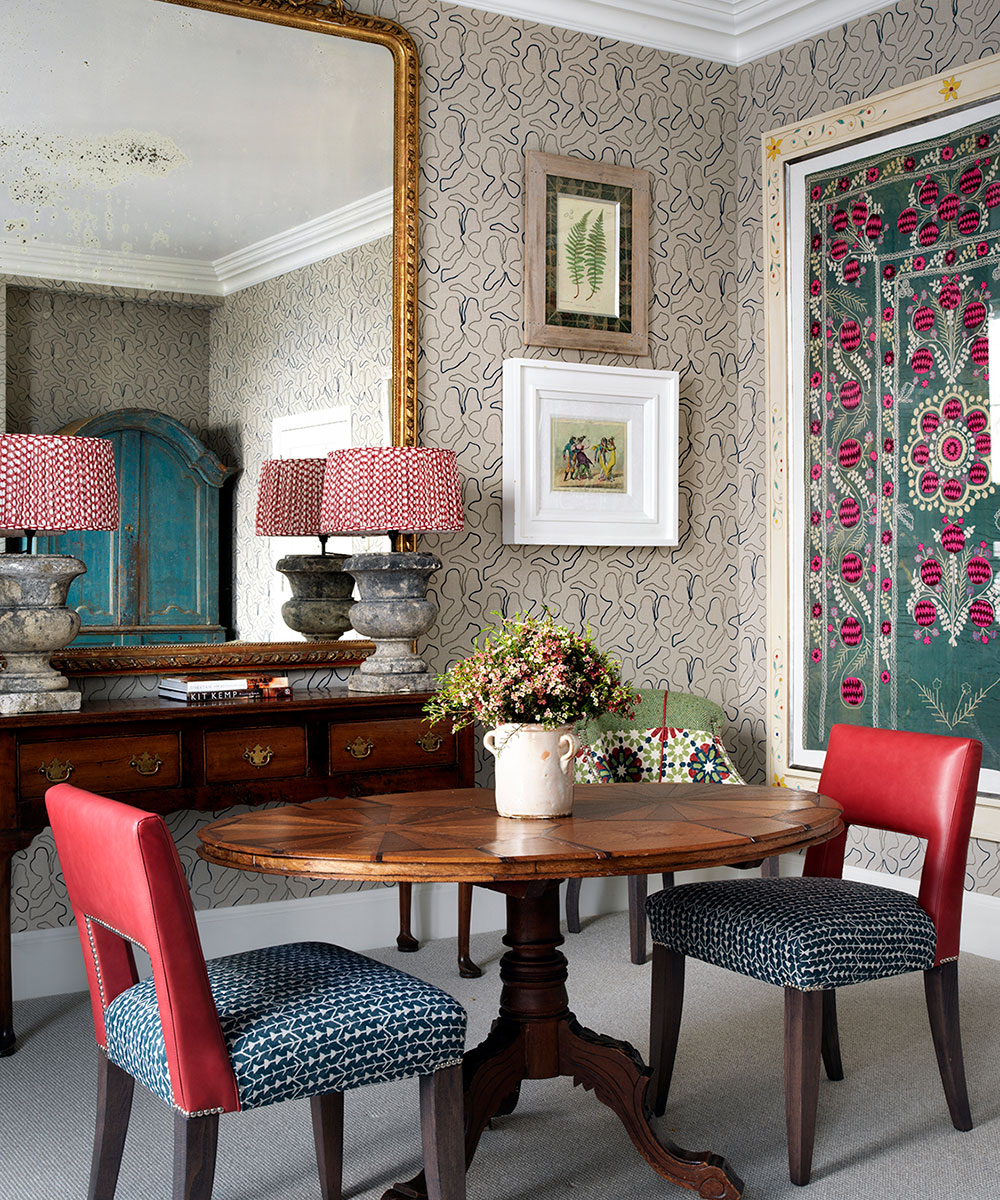

'Arts and crafts from far-flung destinations form an important part of my designs,' explains Kit Kemp.
'From embroidered Suzani fabrics and aboriginal pictures of mythic animals to the natural and tactile quality of baskets and mud beads from South Africa, or the graphic designs of Ghanaian Fante Flags – these unique works of craftsmanship all have elements that inspire me.
'When we are designing a space,I love to use unusual materials and textures that add an extra layer of detail and allow you to travel the world in one room.'
- Love this? Take a tour of Kit Kemp's home – be inspired by her inimitable creativity
Suzani
A Suzani is a large, hand-embroidered textile panel; the word comes from the Persian word Suzan, which means needle.
Originating from nomadic tribes in Tajikistan, Uzbekistan, Kazakhstan and other Central Asian countries, Suzanis have become highly collectable and valued for their fine craftsmanship.
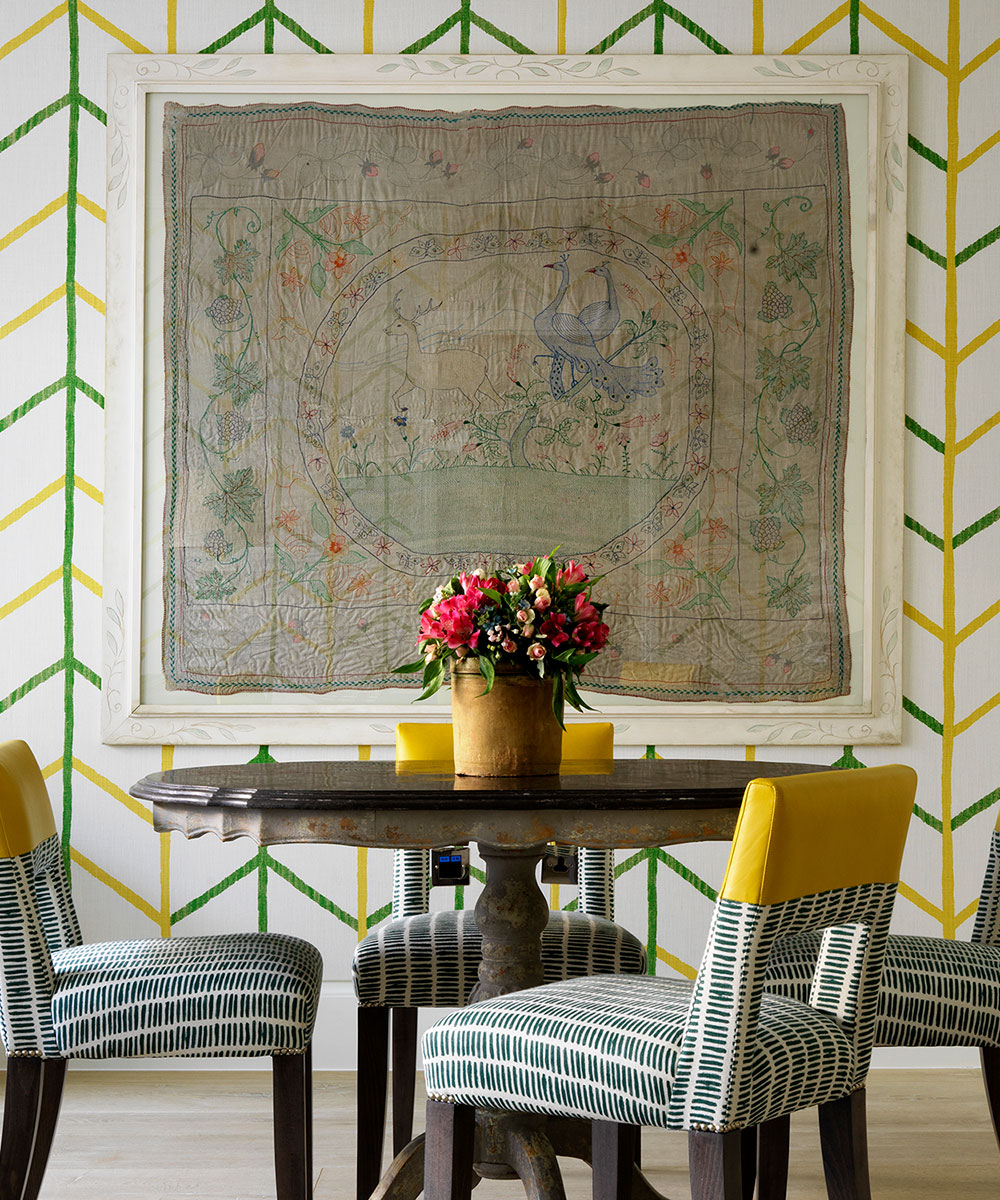
The primary use of a Suzani was within the yurt, as a protective wrapping panel for textiles and belongings. Suzanis had a symbolic significance, too.
They were traditionally made by brides and their mothers as part of a dowry, and presented to the groom on his wedding day.
Sign up to the Homes & Gardens newsletter
Design expertise in your inbox – from inspiring decorating ideas and beautiful celebrity homes to practical gardening advice and shopping round-ups.
The textile is made from cotton, sometimes silk with a variety of patterns, which traditionally include the sun and moon, flowers, leaves, fruits (especially pomegranates), and occasionally fish and birds.
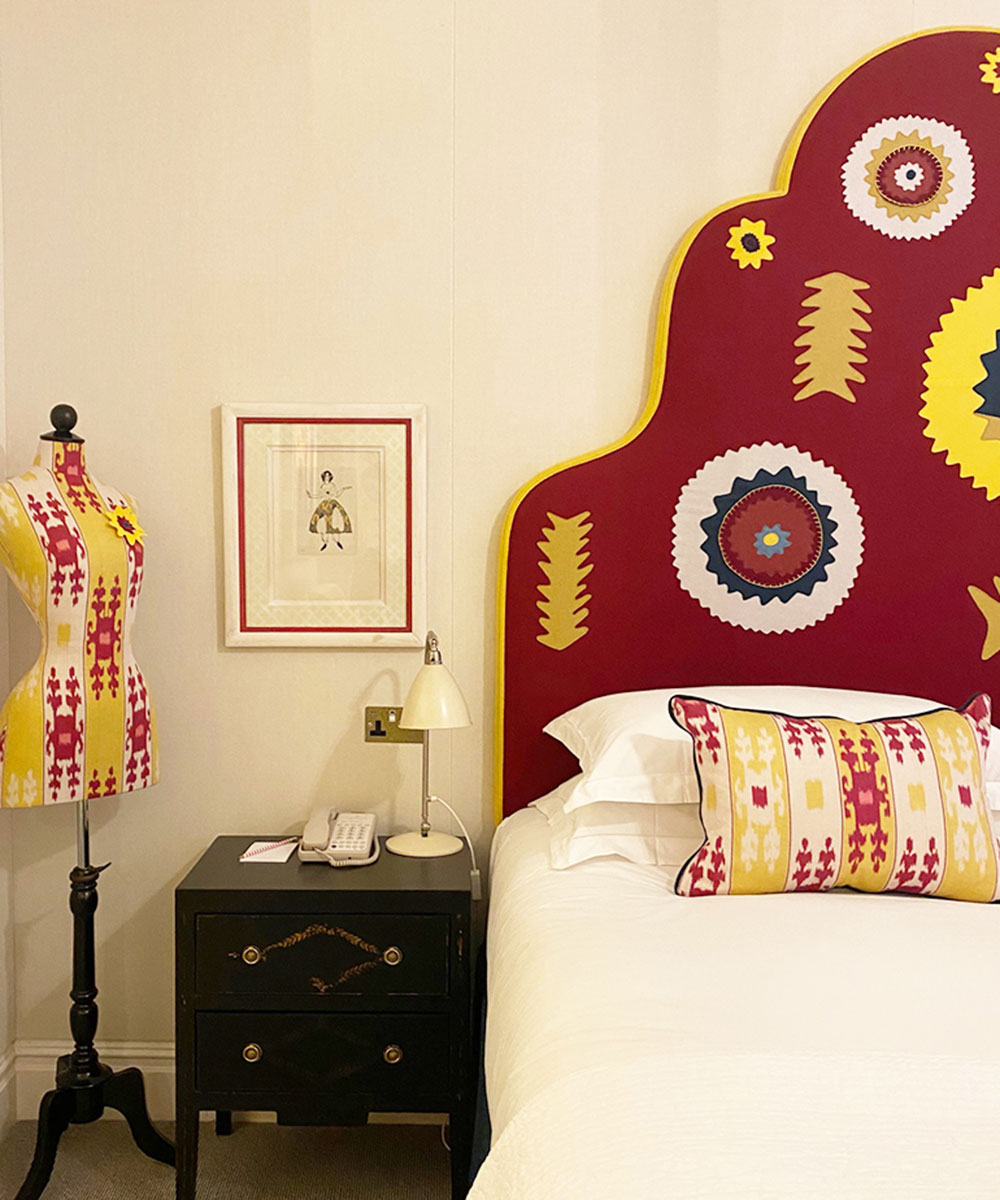
I have collected a variety of original Suzani textiles whilst on my travels. One of the rooms at Covent Garden Hotel was in fact inspired by a silk red Suzani, which hangs on the wall in an elegantly decorated frame.
For the curvaceous headboard, I deconstructed the shapes and patterns of the Suzani and created an abstract composition in a variety of wools.
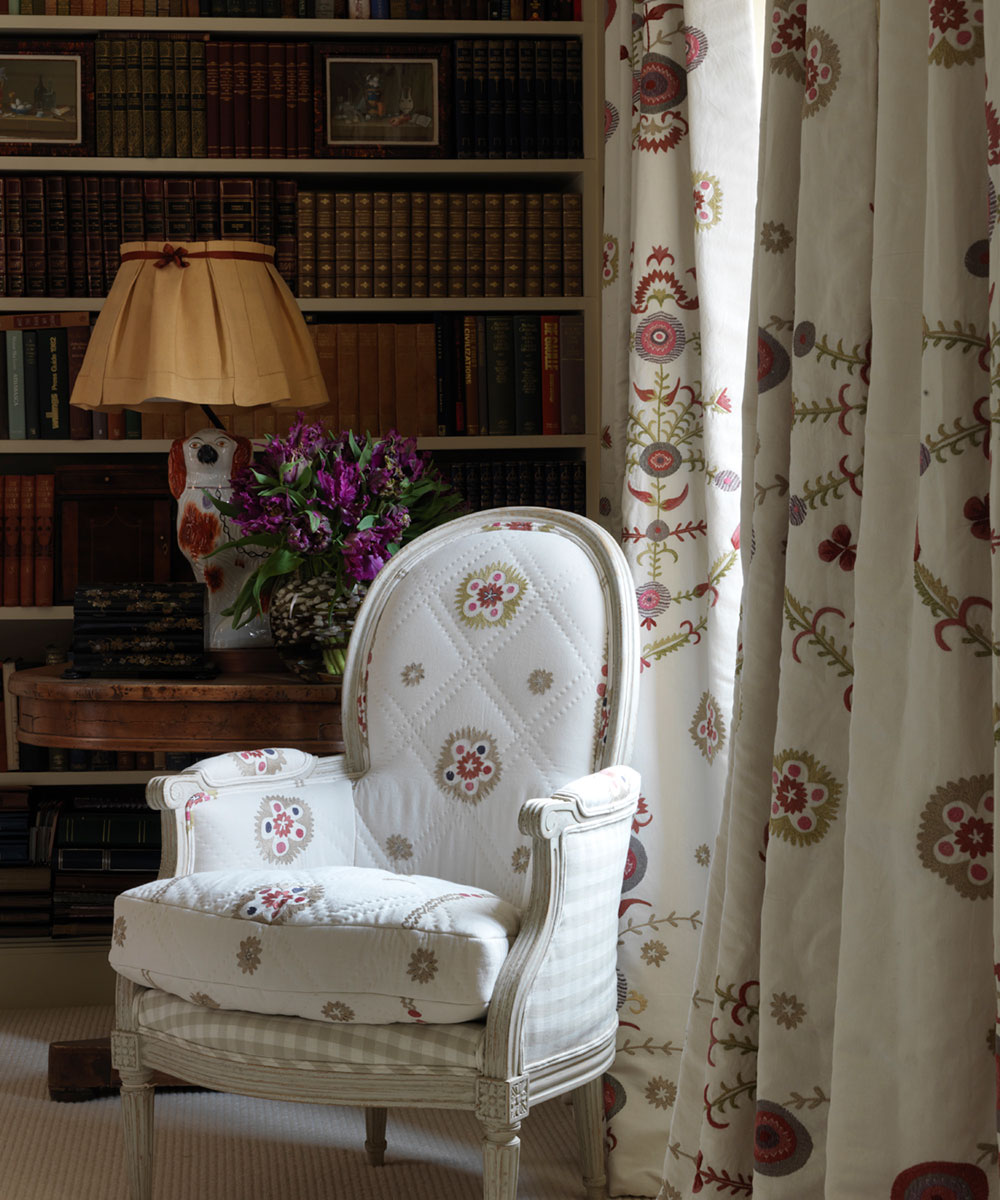
I’ve also created my own modern day version of a Suzani fabric with Chelsea Textiles. The large scale design with repeating motifs in warm tones of pinks, reds and mauves is perfect for a contemporary or traditional setting.
Traditional African patterns
Traditional African patterns have inspired contemporary fabric designs from the likes of Pierre Frey.
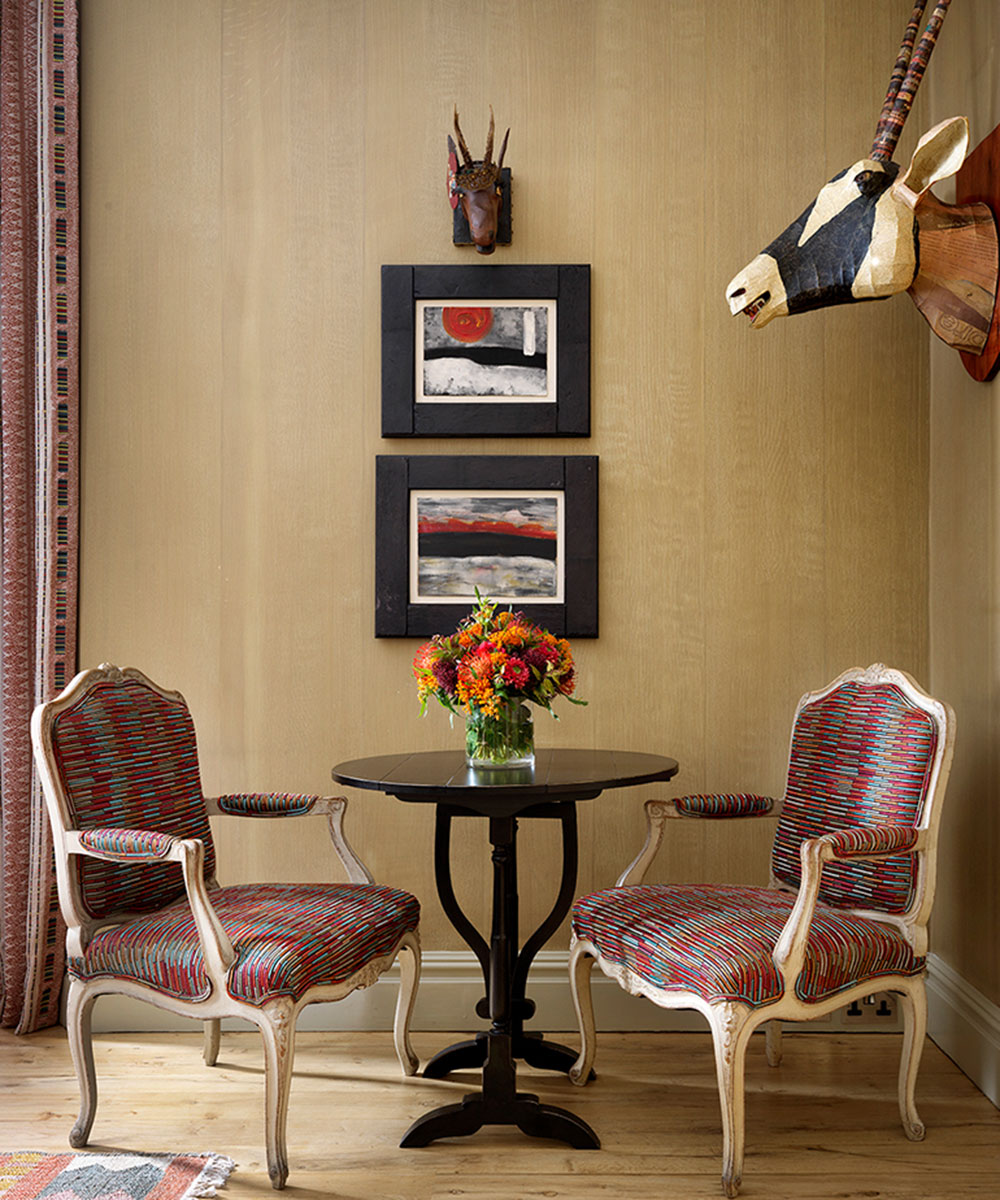
We have upholstered the back of antique chairs with the beaded Origines fabric, bringing a colorful crafted look to a room.
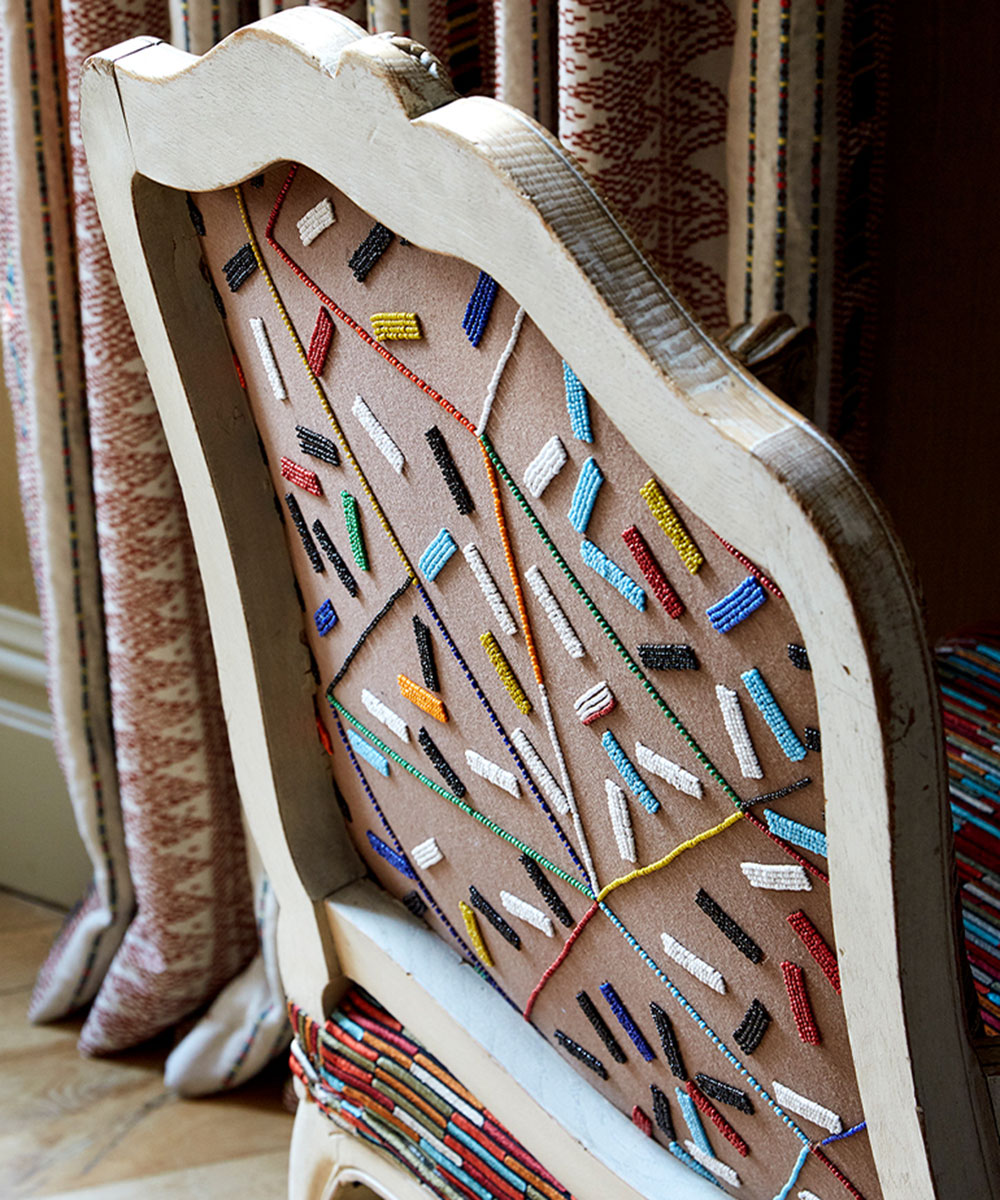
Fante Flags are graphic and pictorial displays of scenes portrayed by the Fante people and Asafo warrior groups of the coastal and forest fringes of Ghana.
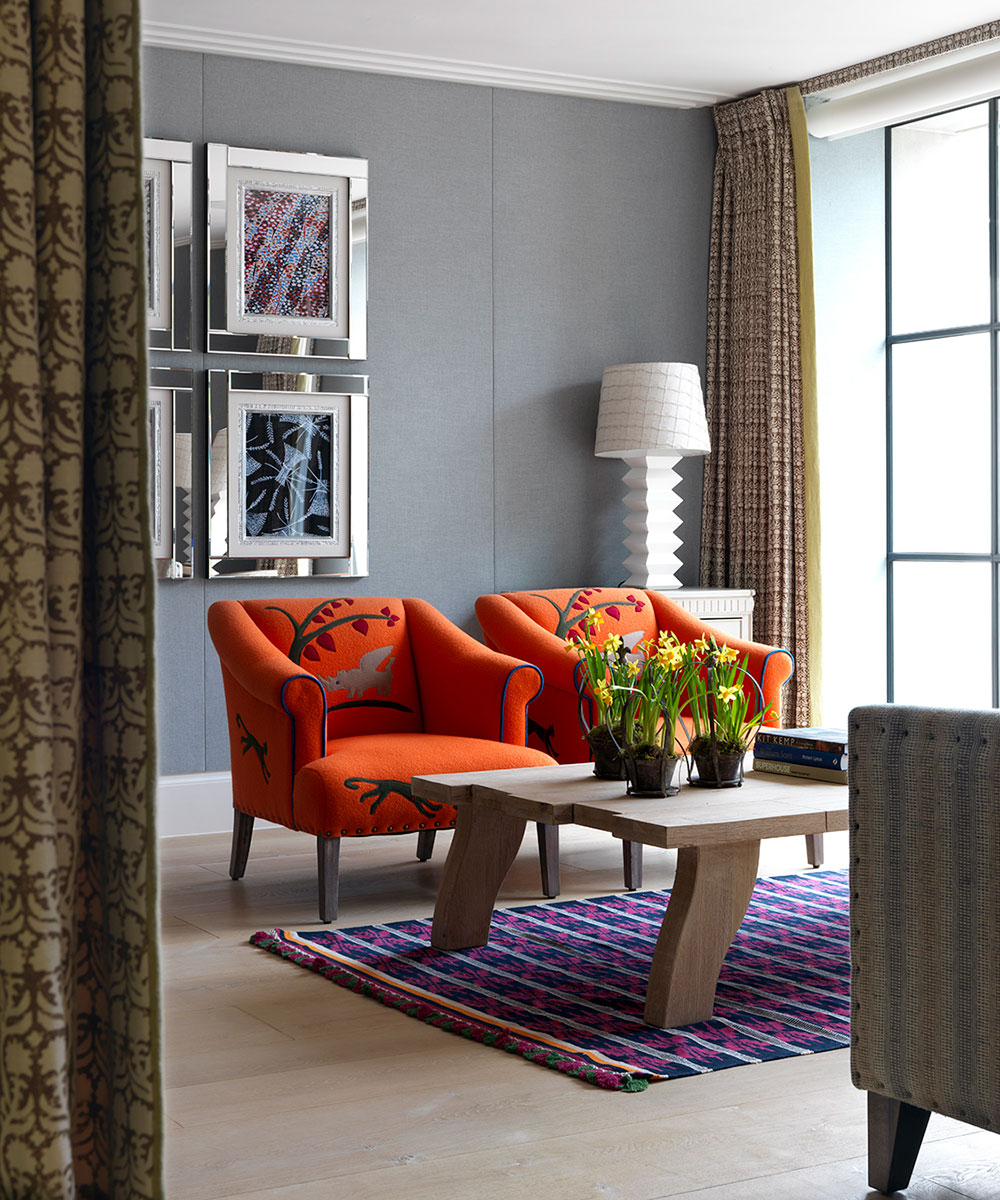
The flags have been a huge inspiration in our designs – we admire the craft and bold coloring. In the past we have cut out and appliqued flying rhinos on to chairs to tell a story inspired by Ghana.
Beads and beading
The humble bead has been used for thousands of years in many cultures as a form of art, currency and decoration. Beads in all their forms, wooden, glass or clay are always a delightful detail, and I like to dress a room with jewelry as much as I do myself.
I often use beads to create playful and fun interiors. There are many ways in which this can be done.
It’s always important to think big. Even when using something small and dainty like a bead, it should still create an impact. We found giant mud bead vases hand made by a collective in South Africa.
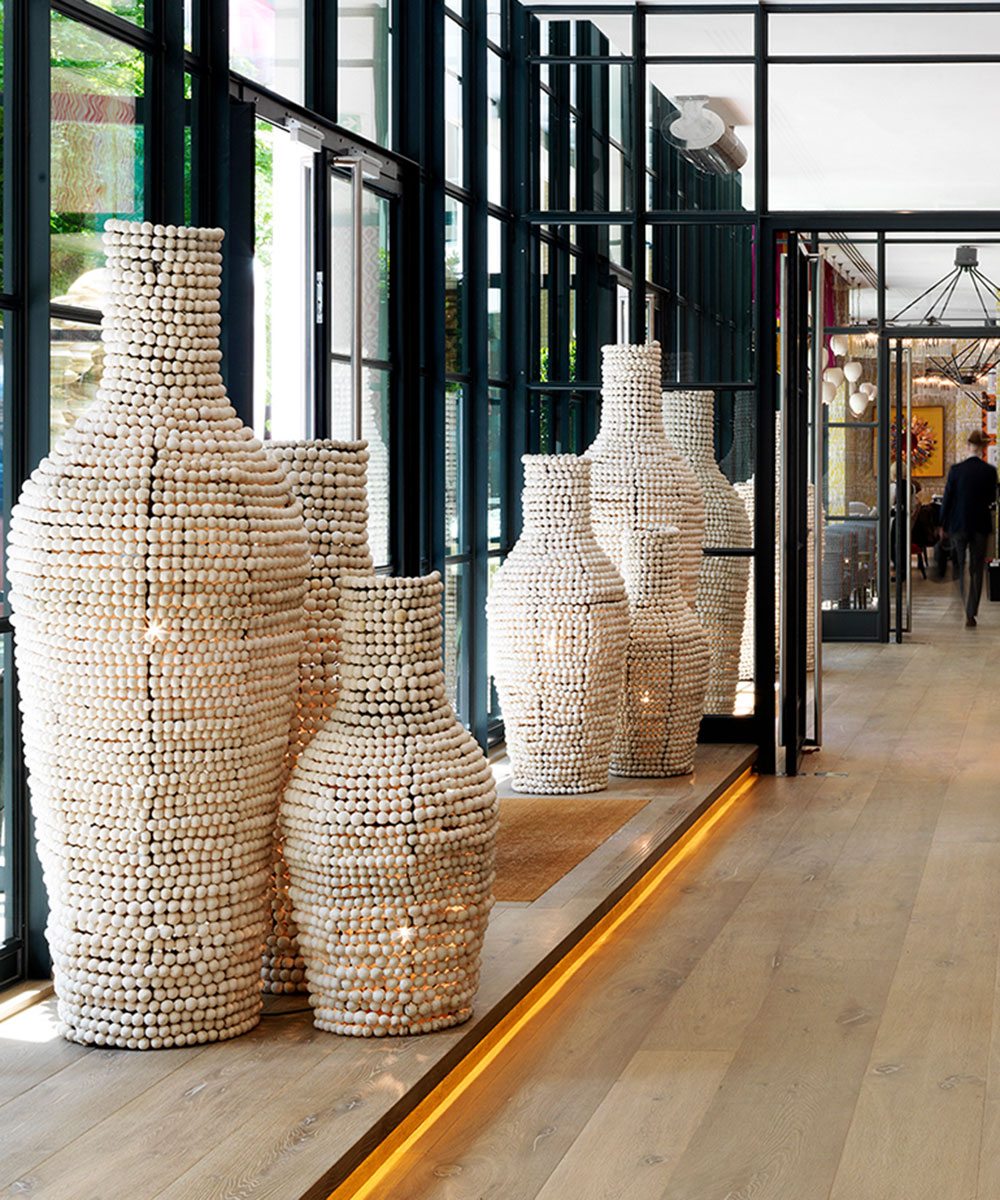
We added lighting within the pots to shine through the gaps between the chalky white beads. These raw and simple beads look bold and impressive placed in groups beside entrance halls.
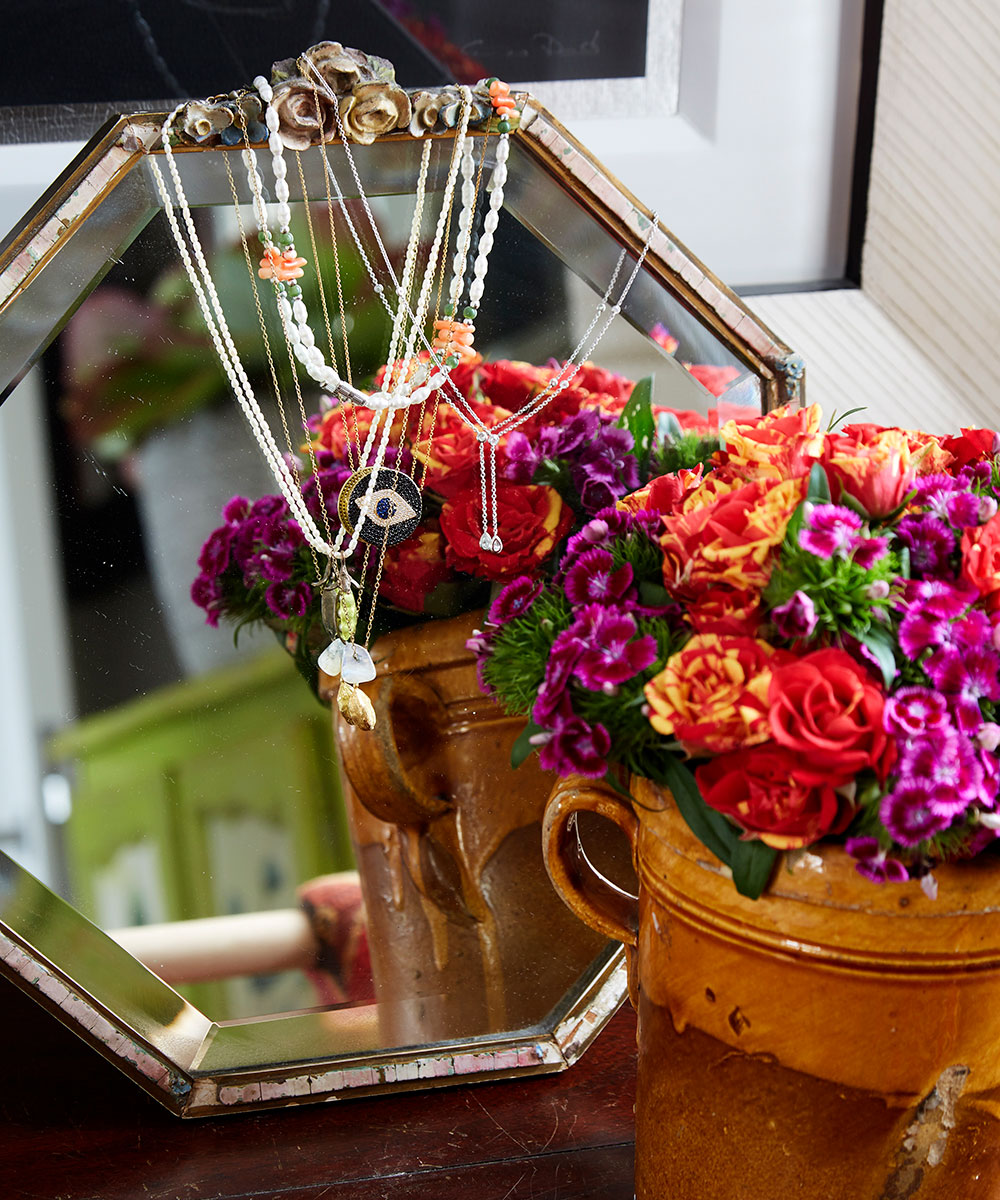
Getting dressed up is always fun, and it’s the same for our interiors. If I have a beautiful necklace from my travels or a string of beads that just seem to fit with the rest of the room, they have been known to end up draped over a piece of sculptural art or hanging from an unsuspecting lampshade.
It adds another texture to the space and makes things personal.
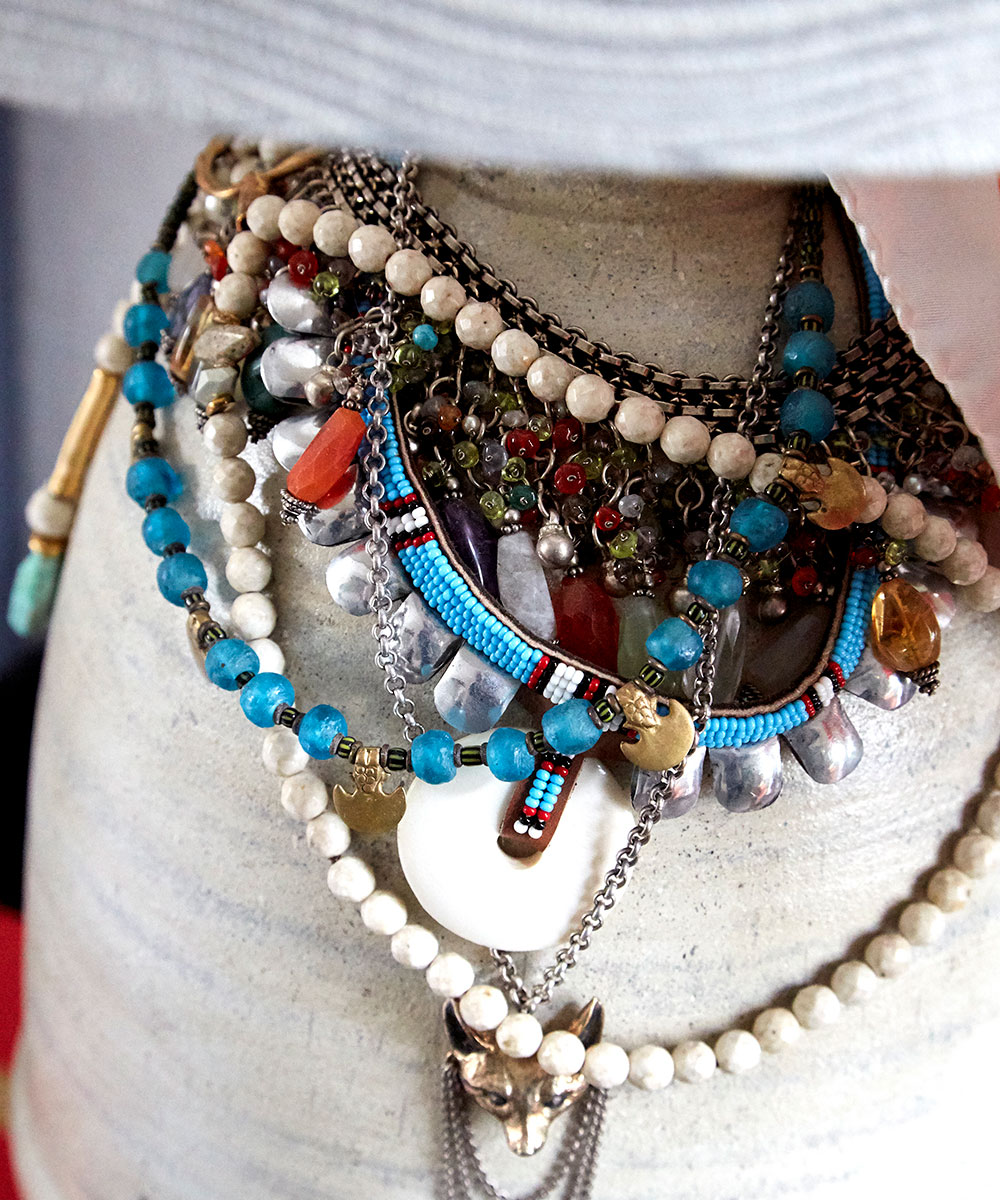
A lovely way to accessorize with beadwork is with your lighting. We have often used miniature beaded chandeliers over small breakfast tables. The combination of fabric and glass beads creates an elegant pattern of light over the table below.
In the Oak Leaf Suite at Ham Yard Hotel, we turned Shaman’s hats from the Yoruba tribe into hanging pendant lights. The intricate white beadwork adds detail and another texture to the room.
My favorite beaded lights have to be the Kirdi’s pendant lights. Made from vibrantly colorful beaded aprons, we hang these in clusters to make most of the fabulous beadwork and bright colors.
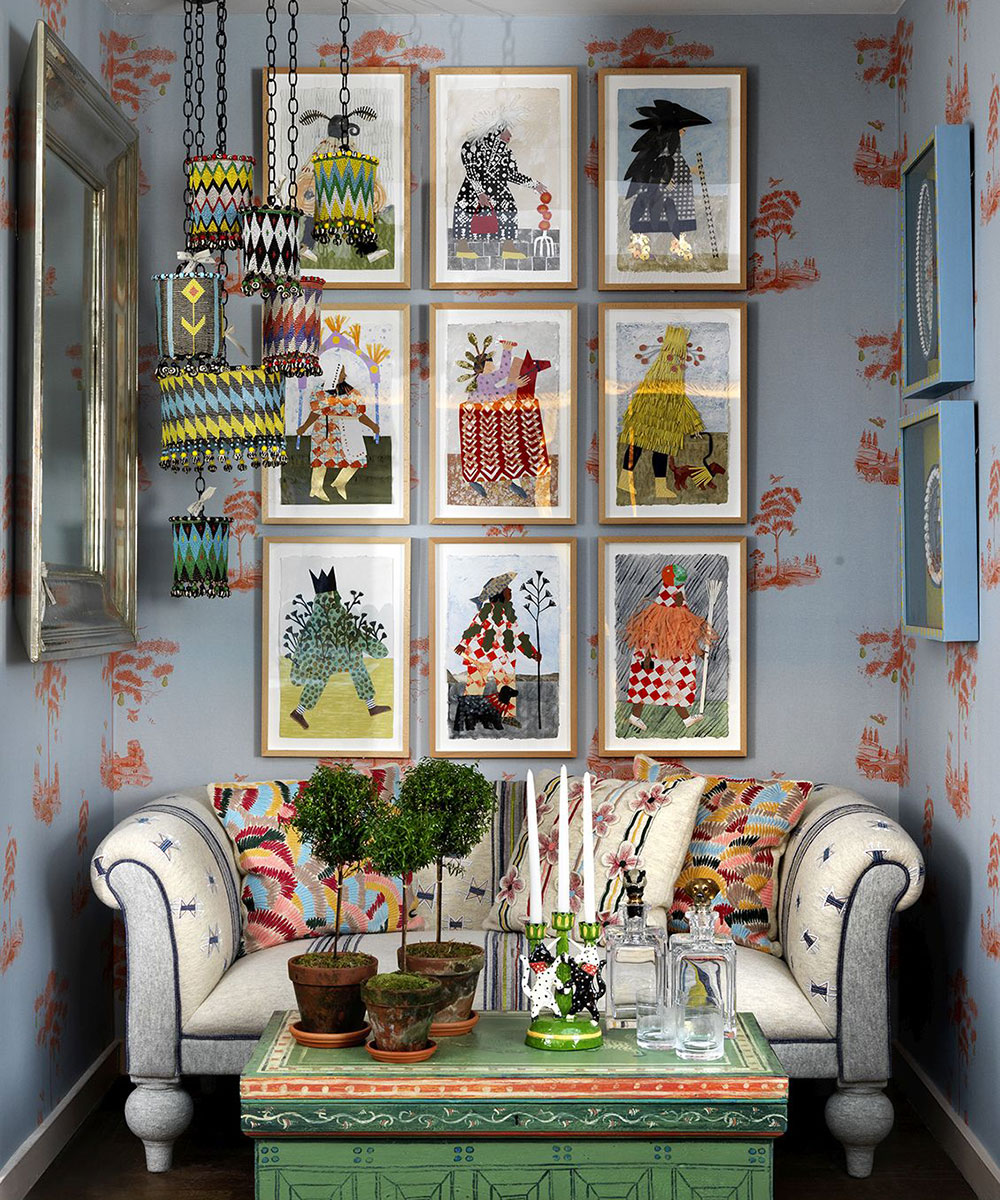
Lastly we love to use beaded trims on curtains and cushions to add a fun accent to a room. It is something you might have to look at for a second time to notice.
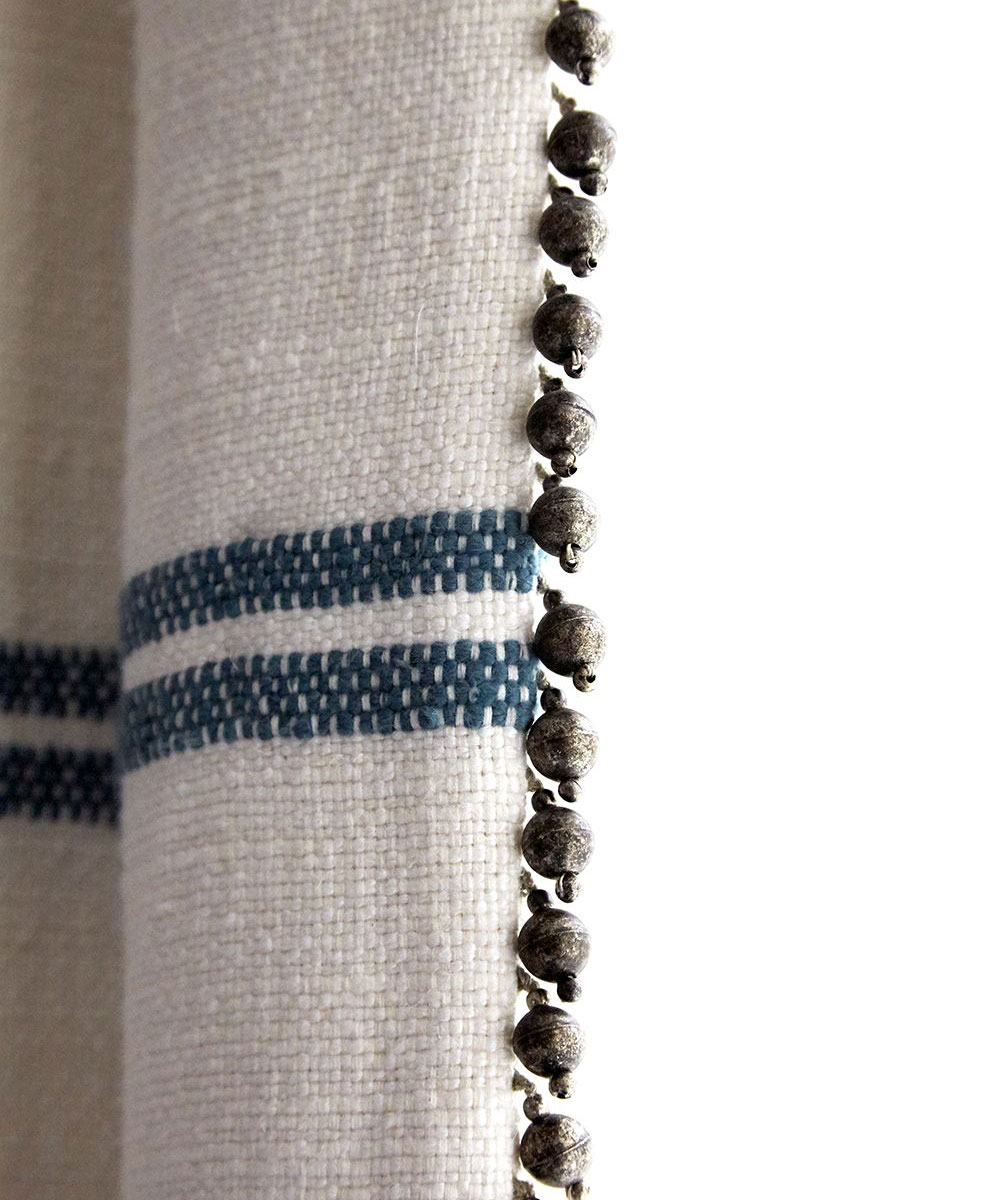
I like to think of those sorts of details as part of the room’s story, like a favorite old book with little gems of prose in the story that you might not catch the first time in reading. A room should always have a surprise on entering and beaded trims and finishes never fail to disappoint.
Block printing
The traditional process of hand block printing on textiles with rich colors has been practised in Rajasthan for around 500 years and we have spent time in Jaipur discovering its history and craft.
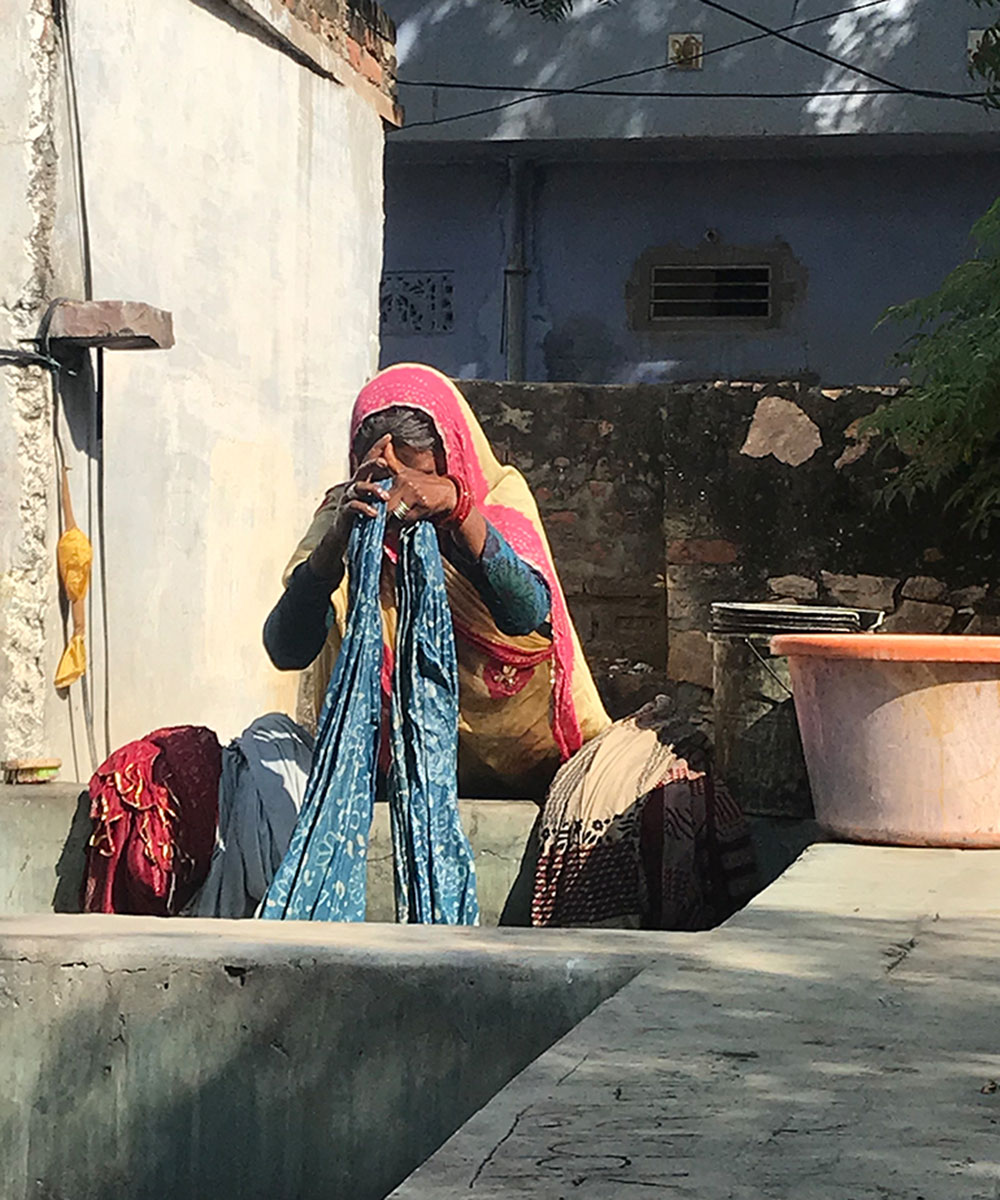
The process takes time and skill, as the pattern must be stamped repeatedly across the fabric, color by color. The subtle gaps and overlaps are a beautiful reminder of the handwork and give block printing its iconic look. Colors made from natural dyes celebrating nature is a winning combination.

A print starts with the design, drawn on paper and carved by hand onto the wooden blocks which are approximately 18-24cm. The physical block is the design for a single repeat, which is then stamped in rows across the fabric.
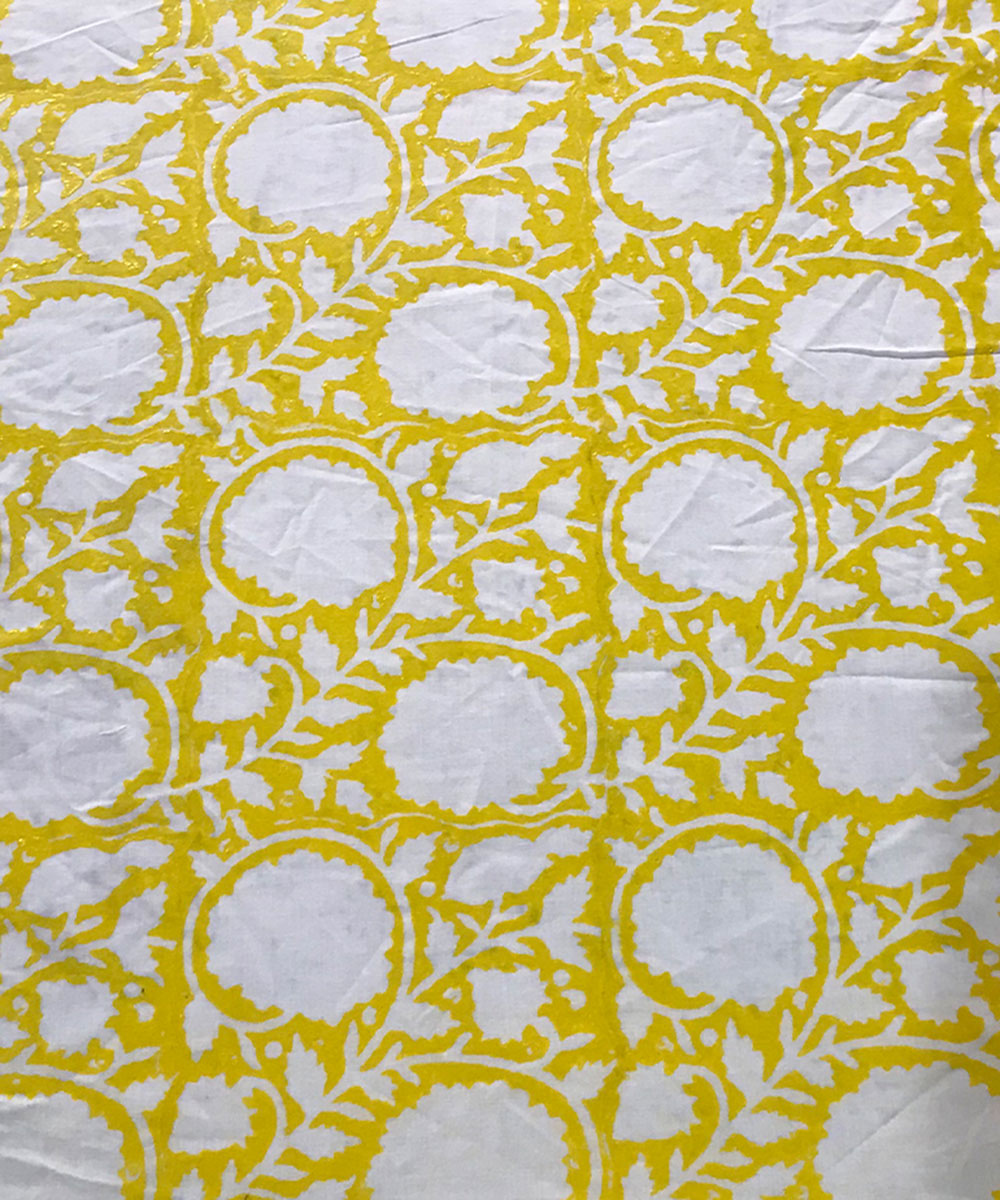
Each element of the design is carved into a separate block. Block carving in itself is a precise art requiring years of apprenticeship and done entirely by hand. Each color pattern is stamped individually onto the fabric.
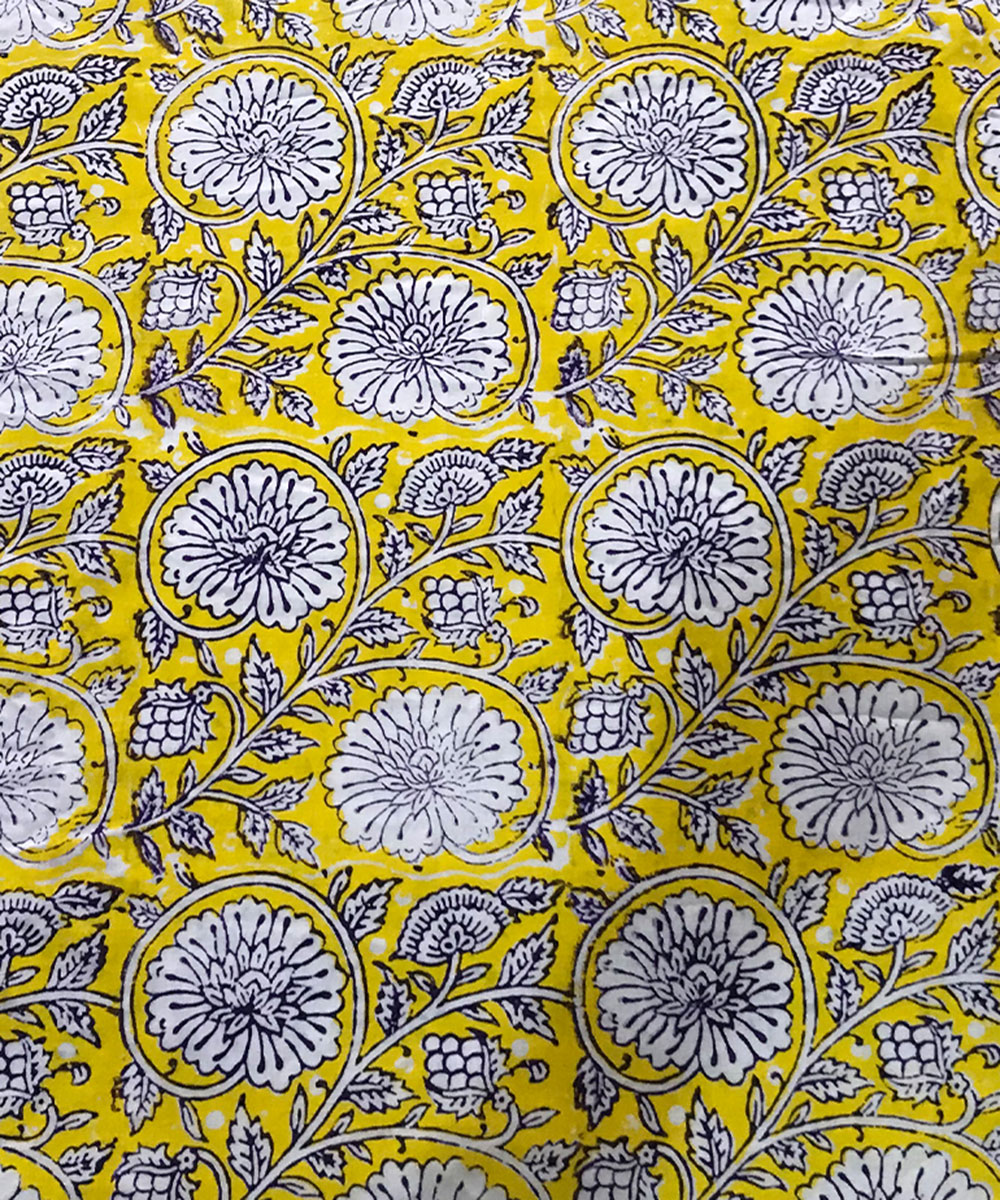
The original Bagru style of printing traditionally uses floral, leaf and geometric motifs on cottons and silks. However in recent decades, designers from the west have worked closely with these local artisans to create Indo-western patterns which are inspired by art and nature.
Kit Kemp is Guest Editor of the June 2020 edition of Homes & Gardens – the first in our 101-year history.Discover more of her work at kitkemp.com

Jennifer is the Digital Editor at Homes & Gardens. Having worked in the interiors industry for several years in both the US and UK, spanning many publications, she now hones her digital prowess on the 'best interiors website' in the world. Multi-skilled, Jennifer has worked in PR and marketing and occasionally dabbles in the social media, commercial, and the e-commerce space. Over the years, she has written about every area of the home, from compiling houses designed by some of the best interior designers in the world to sourcing celebrity homes, reviewing appliances, and even writing a few news stories or two.
-
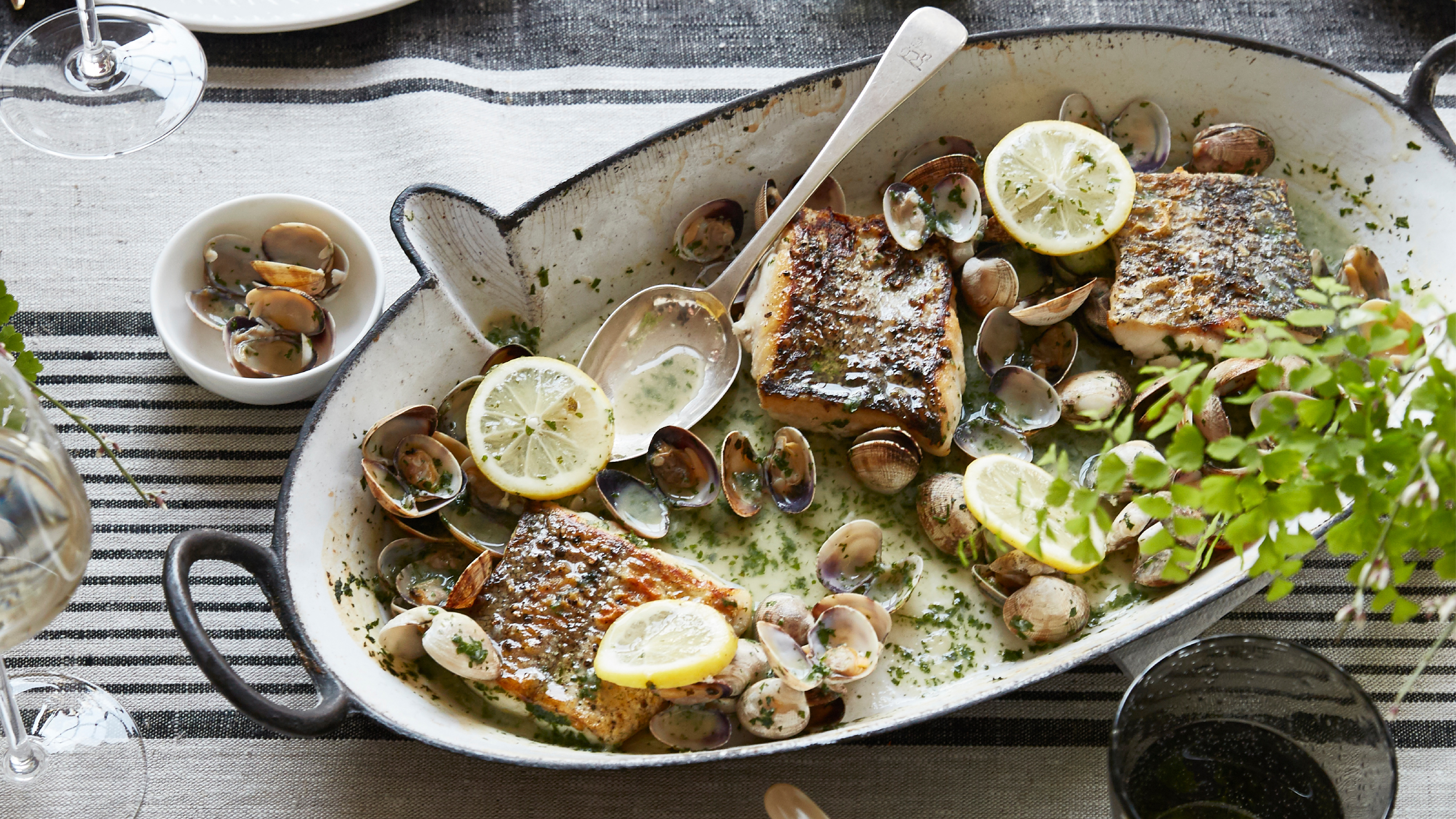 Hake and clams in parsley and wine sauce
Hake and clams in parsley and wine sauceThis one-pan hake and clams recipe is light, flavourful and made for spring — perfect for impressing Easter guests without the stress
By Alice Hart
-
 Lemon cheesecake tart
Lemon cheesecake tartThis lemon cheesecake tart combines two favorite desserts into one smooth zesty showstopper that's perfect for spring gatherings
By Alice Hart